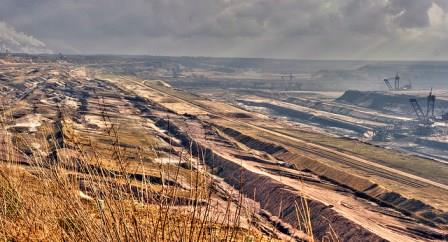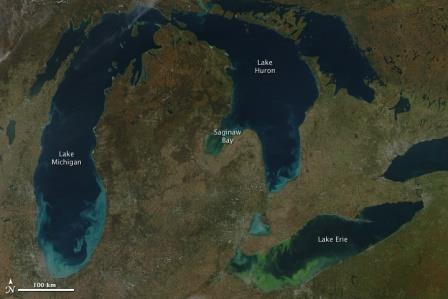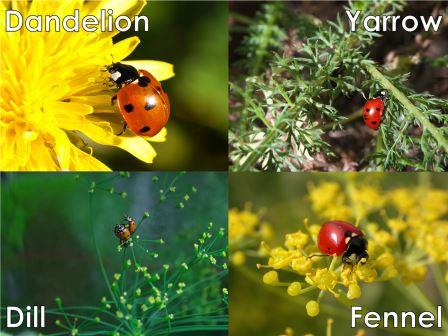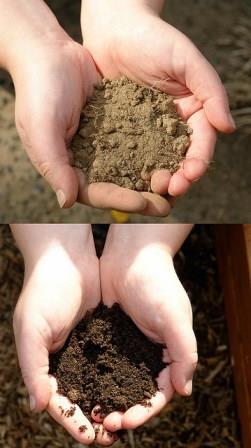What is the importance of aesthetic ecosystem design?
“Man is that uniquely conscious creature who can perceive and express. He must become the steward of the biosphere. To do this he must design with nature.” – Ian McHarg, Design with Nature
Aesthetic ecosystem design is defined in several places on this site, but it bears repeating here:
Aesthetic Ecosystem design is the holistic incorporation of both aesthetic design and ecological design for maximum human and natural benefit. No longer does human and nature need to be at odds. Instead, we can use our power of knowledge and understanding to work with and capitalize upon natural systems in a way that appeals to the senses and evokes the spirit.
So is aesthetic ecosystem design really important?
Is aesthetic ecosystem design all that different from ecological design?
Is aesthetic ecosystem design really more sustainable than any given landscape design?
These are the types of questions I intend to answer here. If this is a new concept, it is perfectly acceptable to be skeptical of this design concept. In fact that is the proper mindset to have, for I believe it is only through rational skepticism that one truly discovers and understands new concepts.
The importance of aesthetic ecosystem design falls primarily into two distinct categories: importance to humans and importance to the natural world.
Aesthetic ecosystem design is important to humans at both the societal and individual level.
For society as a whole, the primary benefit of a large scale aesthetic ecosystem design mindset is an increased appreciation and understanding of our symbiosis with our world.
With an increasingly urban population balance combined with an increasingly industrialized rural population, we as a species have largely separated ourselves from the natural world. The natural world zooms past us at 75 miles per hour as we travel, lies bloated on the side of the highway, or is relegated to the cracks in the pavement. And when we finally stop to visit the natural world, most people see it from the other side of a split-rail-fenced overlook or paved trail.
Despite our physical separation from the natural world in this industrialized technological era, we are inextricably linked to the earth. All we have comes from the earth. Food, water, oil, plastic, steel. All from the earth.
Most of our lives are a one way path of resources: extraction-refinement-assembly-use-discard. This one-way path even holds true for many landscapes, with the primary resources being water and oil used through irrigation, fertilizer, and gasoline. Few realize this process simply cannot go on without providing a return.
Just like a savings account, we need to invest in order to withdraw or have a return. Yet our lifestyle, including most landscape design, is more like the United States’ Social Security system. We are withdrawing upon the future with an expectation that the future will take care of itself. Instead, we should be investing in and improving upon the future. Don’t we all want a better life for the children of tomorrow? If that’s too abstract, how about for the children of today?
By having more conscious design, we work to turn this one-way path into a closed loop in the landscape. In doing so, we begin to understand the impact and interaction we can have on the world around us. We can work to bring the natural world into our mechanized human world.
Thus, society benefits from aesthetic ecosystem landscape design by increasing the awareness of our connection to the natural world and by integrating the natural world more closely to the human world.
For the individual, there are several benefits of aesthetic ecosystem design including a closer connection to nature, a pleasant experience, evoking mind-body-heart, and reduced labor.
Similar to the large scale societal benefit, by designing our intimate landscapes with an aesthetic ecosystem mindset we gain a closer connection to the natural world. The design principles for aesthetic ecosystems by their very definition bring the designer and participant in the landscape to a more intimate connection with the awesome and inspiring complexity and brilliance of nature.
The vast interaction of all organisms and resources becomes more apparent as we even barely begin to understand how intricately developed these interactions are. From soil life to sunlight, we begin to see the great miracle of the natural world in our daily lives.
As such, aesthetic ecosystems by design also become pleasant and desirable places to be. Many non-ecologically designed landscapes can also be pleasant experiences, and many non-aesthetically designed landscapes can also be pleasant experiences. But by combining ecological design and aesthetic design in an appropriate manner, the potential pleasant experience is exponentially greater.
The landscape is no longer pretty but sterile and regimented; nor is the landscape any longer natural but disheveled. Instead, the landscape is teeming with life at all levels and attractive in its own manner.
This combination of the aesthetic with the ecological mindset allows for a deep connection to body, mind, and spirit. The senses are stimulated not only with a visually pleasing experience, but also the sound, smell, and feel of the surroundings. The intellect is stirred not only with the potential for a symbolic experience perhaps, but also in its understanding of a deeper connection between human and nature, plant and soil.
Likewise, the spirit finds a closer integration with the landscape through the increased awareness of the connectedness of all life on this planet and how closely connected we all are to the earth itself.
Whew. That was heavy. Ok, well there’s not a good segue into this one after all that. An aesthetic ecosystem takes less work. By designing the landscape in such a way that it uses natural resources optimally, provides a return for itself, and requires minimal input, we design a landscape that minimizes labor.
Thus, the individual benefits in many ways from an aesthetic ecosystem landscape design, by obtaining a closer connection to the natural world through experience, a more pleasant connection through multiplication of benefit, a deeper connection through all elements of being, and a smaller connection through work and effort.
Aesthetic ecosystem design is important to nature on a large scale and on a local scale.
The primary benefits of conscious design for whole systems and climate regions on a large scale are resource consciousness, reduced ecosystem disruption, and increased buffering capacity.
It may seem like a small impact when we run the hose for a few minutes to water our grass, or spread a pound of fertilizer and weed killer across our lawns. However, when a large portion of properties across a given area have a similar practice, the impact quickly multiplies. The outcome is resource depletion or accumulation.
An example of this is the Lake Erie algae bloom occurring each summer since the mid-1990s, and causing a shutdown of the Toledo water system in
2014. High phosphorous and nitrogen runoff from agricultural fields and lawns makes its way into the Sandusky and Maumee River basins each year, causing abundant growth of toxic algae and depleting dissolved oxygen available to aquatic life.
While the root cause of this event is primarily pointed towards agricultural practices, many studies have shown that a large percentage of chemicals applied in commercial and residential areas end up in surface water runoff.
Another example of resource depletion is the Colorado River. This river, like most river systems, once made its way to the ocean. Yet for many years it has existed as a dried riverbed as its waters feed development, agriculture, and urbanization in the West. Only through great effort has it recently had waters reach the Pacific yet again.
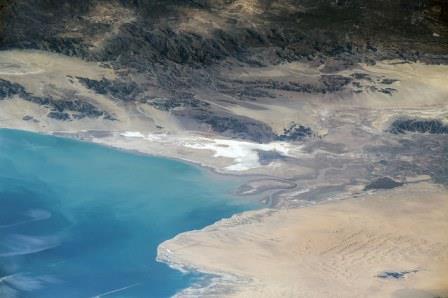
The Colorado River has not flowed through its delta for many years. Recent efforts have allowed waters to reach the ocean once again.
Enter aesthetic ecosystem design and other ecological design practices, which provide a more conscious assessment of the developed land to reduce chemical and resource use.
Likewise, aesthetic ecosystem design also reduces disruption of the existing or natural ecosystem. From tipi and hut to high-rise and parking garage, human habitation disrupts the surrounding environment. Of course, certain developments have a much larger impact than others.
Regardless of the extent of the development, engagement in aesthetic ecosystem design provides a reduction of impact on the surrounding landscape. This style of design allows reduction of impact in a way that integrates the built environment with the surrounding landscape, which is in turn integrated with the surrounding ecosystem.
This reduced disruption of the ecosystem in turn provides additional buffering capacity by the designed landscape. Buffering capacity is the ability of an element to reduce a given change and lessen extremes. An example of buffering capacity is how the north side of a building in the northern hemisphere remains cooler than the surrounding landscape on summer afternoons. This is due to the shade provided by the building.
In the designed landscape, buffering is manifested in the form of heat retention and dispersion, water retention, wind dispersion, and so on.
When such conscious designs are implemented pervasively on a widespread scale, the impact can be drastic. Why? Because these design practices consider the impact upon the natural world.
Most design only pays cursory or one-dimensional attention to such areas. Aesthetic ecosystem design and ecological design incorporate holistic ecosystem analysis and understanding into the design process.
The primary benefits of conscious design for ecosystems on a local scale are plant, insect, and soil health.
Aesthetic ecosystem design focuses on each element of a design and compares to the whole design and local climate. In doing so, each element becomes integrated as part of a larger design, where each piece serves a specific function or provides for a need.
This means that plants are consciously placed not only for their aesthetic value but also for their ecological value. A certain plant in one area may provide shade, while another nearby provides soil nitrogen, while others attract pollinators year round, while yet another digs deep to mine valuable nutrients from the soil. In this way, each plant supports the others to build resilience and strength in a design and reduce competition for resources.
Whether we like it or not, insects are a valuable part of an ecosystem. Thus, it is important to support an appropriate balance of beneficial insects to add to the health of the local ecosystem and mitigate pest issues.
Plants have evolved alongside insects for ages, resulting in many intertwined symbiotic and parasitic relationships. The most vulnerable of these
relationships are often the symbiotic relationships, where insects and plants benefit each other. Thus, it is important we support these relationships for the benefit of the plants, the insects, and the overall ecosystem.
An example of a disrupted symbiotic relationship is the result of pesticide use in agricultural fields. By using a blanket pesticide, the pest insects are reduced along with predator insects. Even with targeted pesticides, the predators will die out or leave once their primary food source is diminished. Once reduced, pest insects often have shorter reproduction times and faster rebounding life cycles than the predator insects. The result is the rapid return of the pest problem without a balancing return in the predator insect population.
In this example, if we instead provide host plants to provide shelter and food source to the predator insects, we maintain a healthy predator population to keep the pests at bay.
Another major element that benefits from aesthetic ecosystem design is the soil. One of the most crucial pieces that support all life, soil must be cared for in order to provide for a healthy ecosystem. From a design standpoint, healthy soil means healthy plants, which means fewer problems with the landscape and a more enjoyable experience with the designed landscape.
When most people look at soil, they see dirt. That is, people see a mix of fine particles with the capacity to get you dirty. If it’s too wet you get muddy and if it’s too dry you get dusty. Dirt is a dead material. Soil is a living ecosystem all in its own.
Have you ever grabbed a handful of soil from a healthy garden, or the decaying
material on a forest floor? It is somewhat spongy and has a distinct but pleasant
smell that is unforgettable. Yes, a pleasant smell. That unforgettable smell is a result of the life teeming within that handful. A vast array of bacteria, fungi, nematodes, crustaceans, protozoa, and other soil organisms work together to recycle nutrients into bioavailable forms so that other soil organisms and plants can live upon that soil. It is all an intricately and wonderfully connected web of life that we understand so little about.
But while we may not know much about the intricacies of soil life, we know how to support it. The aesthetic ecosystem design process incorporates an understanding of the importance of soil and how easy it is to destroy such a precious resource. If designed properly, a landscape can help build healthy soil that will lead to healthy plants.
I hope these points make you as excited about the possibilities of aesthetic ecosystem design as I am to write about them.
It is only through conscious design that we can truly help mitigate our impact upon the natural world and enhance our human experience at the same time. These areas represent the main important benefits of a properly implemented aesthetic ecosystem design, but the benefits number far beyond those listed here.
I leave it to you to begin to understand all the possible ways in which aesthetic ecosystem design can benefit the natural world and enhance our own experience simultaneously.
So what do you say? Learn more about the core principles of aesthetic ecosystem design!
Image Credits: Flickr: Bert Kaufmann, Esther Westerveld, hardworkinghippy, NASA’s Earth Observatory, Stuart Rankin, JKehoe_Photos, William Warby, JKehoe_Photos, Mark, Gilles San Martin, Josh Larios
Human Importance
- Benefit to Society
- Increased awareness of connection to natural world
- Creating a closed-loop system
- Benefit to Individual
- More intimate connection to natural world
- Pleasant experience
- Connection to mind, body, soul
- Reduced labor
Natural Importance
- Large Scale Impact
- Resource consciousness
- Reduced ecosystem disruption
- Increased buffering capacity
- Local Impact
- Plant health
- Insect balance
- Soil life enrichment



